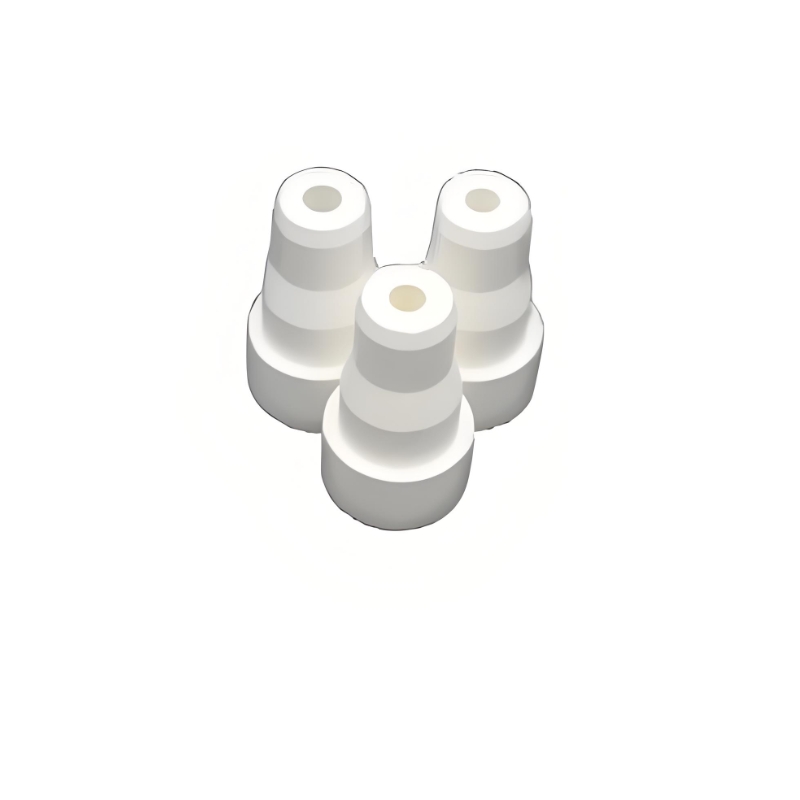Discover Premium Ceramic Products | Durability & Elegance United | Advanced Ceramics
Hotter Than Hell: The Ceramic Shields Saving Our Spacecraft
(Breakthrough Of Ultra-High Temperature Ceramics (Uhtcs) In Spacecraft Thermal Protection Systems)
Space travel pushes materials to their absolute limits. Think about it: spacecraft plunge back into Earth’s atmosphere at over 17,000 miles per hour. Friction heats the air around them to temperatures hotter than the surface of the sun. For decades, protecting astronauts and sensitive equipment meant relying on materials that essentially burned away slowly. Now, a revolutionary class of materials is changing the game: Ultra-High Temperature Ceramics, or UHTCs. These aren’t your grandma’s china. They’re the toughest heat shields imaginable, enabling missions we once thought impossible. Let’s dive into this blazing hot technology.
1. What Exactly Are Ultra-High Temperature Ceramics (UHTCs)?
Forget regular ceramics. Ultra-High Temperature Ceramics are a special breed. They are incredibly hard, complex materials made from compounds like zirconium diboride (ZrB2), hafnium diboride (HfB2), or tantalum carbide (TaC). What makes them “ultra-high temperature”? They don’t just resist heat; they laugh at it. UHTCs can withstand continuous temperatures soaring above 3,000 degrees Celsius (over 5,400 degrees Fahrenheit). That’s hotter than molten lava. They don’t melt. They don’t weaken easily. They maintain their strength and shape in conditions that would vaporize most metals. Think of them as the ultimate heat-resistant armor. Their secret lies in extremely strong atomic bonds and a high melting point. This gives them unique stability when the thermal going gets tough.
2. Why Do We Need UHTCs for Spacecraft?
Re-entering Earth’s atmosphere is brutal. A spacecraft hurtles through thin air incredibly fast. This compresses the air violently in front of it. That compression generates intense heat through friction. Temperatures can exceed 1,600°C (2,900°F) on the surface of the heat shield. Older materials, like the carbon-phenolic used on early capsules, worked by ablating – slowly charring and eroding away. This sacrifice protected the craft but wasn’t reusable. For reusable spacecraft, like shuttles or future vehicles, ablation isn’t ideal. You need a shield that survives trip after trip. UHTCs offer that. They don’t burn away significantly. They endure the extreme heat. This allows for lighter, more robust, and reusable Thermal Protection Systems (TPS). Without UHTCs, ambitious missions to Venus or faster interplanetary travel remain too dangerous. They are key to going farther and coming back safely.
3. How Do UHTCs Work as Thermal Protection?
UHTCs protect spacecraft through several clever mechanisms working together. First, they have an incredibly high melting point. They simply stay solid when other materials turn liquid or gas. Second, they possess low thermal conductivity. This means heat travels through them very slowly. The intense heat hitting the surface doesn’t rapidly transfer inward to the spacecraft structure. Think of it like a super-efficient oven mitt. Third, many UHTCs form a protective oxide layer when exposed to extreme heat and oxygen. For example, zirconium diboride forms a layer of zirconia (ZrO2) on its surface. This glassy layer acts like a shield. It blocks further oxygen from reaching the material underneath and helps reflect some heat away. Finally, they are very hard and resistant to erosion. The high-speed particles during re-entry can’t easily wear them down. It’s this combination of traits – not melting, slow heat transfer, self-protecting surfaces, and toughness – that makes them superheroes of heat shielding.
4. Applications: Where Are UHTCs Making a Difference?
Ultra-High Temperature Ceramics are finding critical roles beyond just spacecraft nose cones. Their extreme capabilities are vital for the hottest spots on spacecraft and other demanding fields. Leading edges on wings and control surfaces face the fiercest heating during re-entry. UHTCs are perfect for these sharp, critical components. Rocket nozzles endure the scorching exhaust of rocket engines. UHTC linings help these nozzles survive longer. Hypersonic vehicles traveling far faster than sound generate immense heat on their leading edges and engines. UHTCs are essential materials for developing these futuristic craft. Nuclear reactors require materials that can handle extreme conditions. UHTCs are candidates for fuel cladding or other high-heat components. Cutting tools used for machining super-alloys need to stay hard at high temperatures. UHTC-based tools excel here. Essentially, anywhere insane heat is a problem, UHTCs offer a potential solution.
5. FAQs: Burning Questions About Ultra-High Temperature Ceramics
Q: Are UHTCs brittle like regular ceramics?
A: Yes, they can be brittle. This is a major challenge. Engineers work hard to design components that minimize stress and use UHTCs where their brittleness is less critical than their heat resistance. Research into toughening them is ongoing.
Q: If they’re so great, why aren’t they used everywhere?
A: Cost and manufacturability are big hurdles. Making complex UHTC parts is difficult and expensive. Processing requires very high temperatures and specialized techniques. Scaling up production for widespread use is still a work in progress.
Q: Can UHTCs handle the cold of space too?
A: Absolutely. Their stability works both ways. They maintain strength and don’t become overly brittle at cryogenic temperatures, making them suitable for the full space environment.
Q: Do UHTCs react with anything besides oxygen?
A: Some UHTCs can react with water vapor at high temperatures, which is a concern during Earth re-entry where steam is present. Research focuses on developing compositions or coatings to improve environmental resistance.
Q: What’s next for UHTC technology?
(Breakthrough Of Ultra-High Temperature Ceramics (Uhtcs) In Spacecraft Thermal Protection Systems)
A: The future is bright and hot! Key areas include developing tougher composites, finding ways to make them cheaper and easier to shape, creating better oxidation-resistant coatings, and discovering entirely new UHTC compositions with even better properties.


